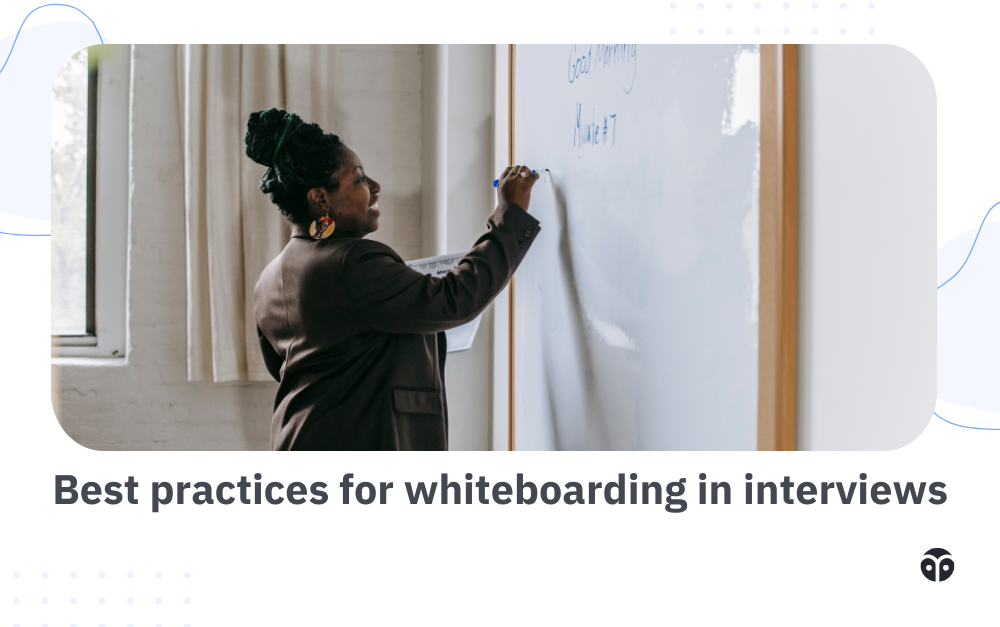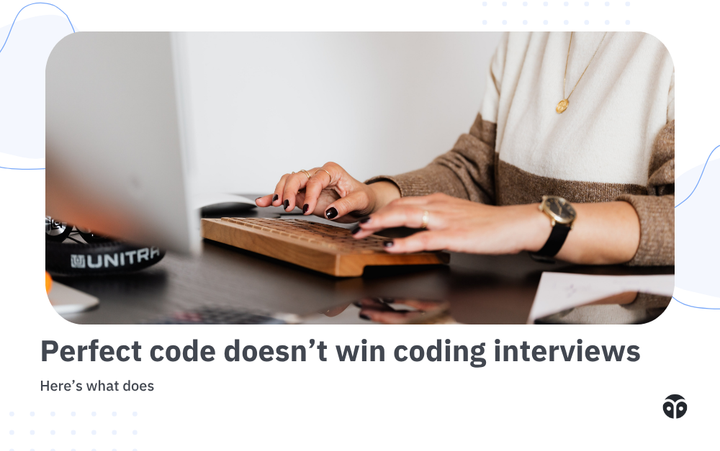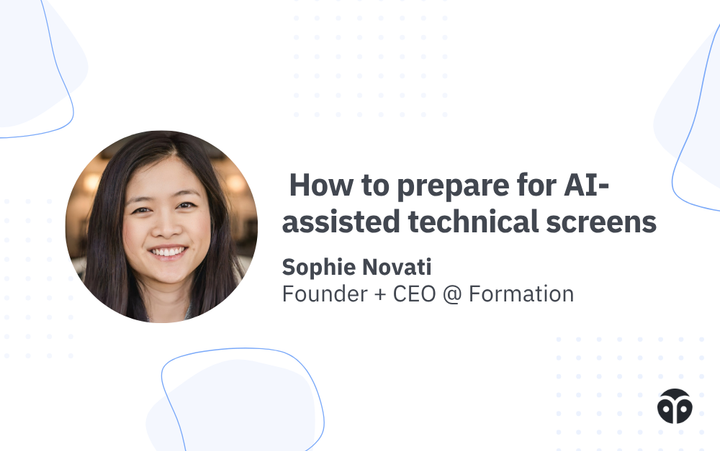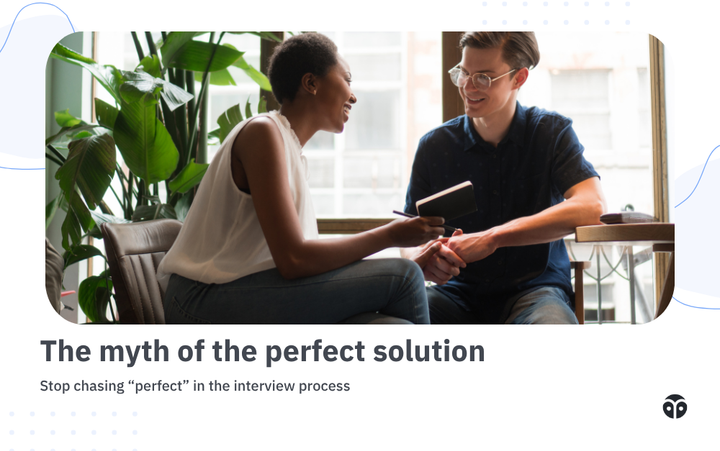How to ace the whiteboarding component of a system design interview
Whiteboarding interviews test clarity, structure, and communication. Learn how to prep, avoid common mistakes, and use visuals effectively.

Whiteboarding is a core part of system design interviews. While the format has shifted from physical boards to virtual tools, the expectations remain the same: communicate clearly, structure your thinking, and collaborate in real time.
You don’t have to draw perfect diagrams. You have to know how to use visuals to drive a conversation.
If you want to stand out, try treating whiteboarding as a distinct, learnable skill.
Why whiteboarding matters
System design interviews — and the whiteboarding that comes with them — used to be reserved for senior engineers. That’s no longer the case. Today, mid-level engineers are often expected to walk through architecture diagrams, and even interns at top companies may face simplified versions of these exercises.
At Formation, we’ve seen this shift happen across the board. Whiteboarding is no longer optional or niche — it’s now a standard part of the technical interview loop.
The problem? Many candidates, especially earlier in their careers, don’t expect it. They prepare for coding and behavioral interviews but overlook system design entirely. That gap can make the difference between moving forward or not.
And while good whiteboarding may look effortless, it isn’t. It’s a skill that takes time to build, and without practice, it can feel unnatural. Interviewers expect you to lead the conversation, diagram in real time, and communicate your approach clearly.
That kind of fluency only comes with preparation.
What interviewers are actually assessing
The whiteboarding component is usually part of the broader system design interview. You're given a broad, abstract prompt, something like "build an instant messaging service", and you're expected to take that requirement and translate it into a technical blueprint.
In these interviews, the interview is trying to learn:
- Can you clarify ambiguous requirements and ask smart follow-up questions?
- Can you identify and break down the core technical challenges?
- Can you propose an initial approach and adapt it as new constraints emerge?
- Can you explain your thought process clearly while diagramming at the same time?
The diagram itself isn’t the goal. It’s a tool that helps you:
- Drive the conversation
- Ask clarifying questions
- Break the problem into smaller technical challenges
- Propose, evaluate, and improve a solution
What you write or draw helps you and your interviewer stay aligned. It creates a shared visual reference and makes your thought process easier to follow.
Getting to know whiteboarding tools
You’re not being tested on your ability to use a specific diagramming tool, but how comfortable you're with it matters. If you’re fumbling with the interface, it becomes harder to focus on the problem itself.
One of the easiest ways to prep is to confirm the tool ahead of time. Ask your recruiter or interviewer what to expect. If you have a choice, opt for the one you know best. If a specific tool is required, take time to get familiar with it before the interview.
Popular whiteboarding tools include:
- Excalidraw
- FigJam (part of Figma)
- TLDraw
- We’ve even heard of some interviews done in Google Slides!
Get comfortable with the basics: drawing shapes, adding text, grouping components, and using arrows to indicate flow. You don’t need to master advanced features. A clean, consistent diagram is far more effective than a complex one.
Top 3 mistakes people make whiteboarding
Whiteboarding is a skill that can be developed, much like coding or debugging. The more you practice, the more confident and effective you’ll become.
Here are the most common pitfalls we see (and how to avoid them):
1. Not writing anything down
Talking through your ideas without writing them down makes it hard to stay organized, and even harder for the interviewer to follow. A quick sketch helps you spot gaps in your approach, stay on track, and buy yourself thinking time. It might seem simple, but make sure to write things down.
2. Forcing everything into the architecture diagram
Many candidates treat whiteboarding like a checklist: gather requirements, define APIs, draw object models, and then sketch a single architecture diagram. But not every problem fits neatly into that format. Complex workflows or sequences are often better communicated through step-by-step flows or lists.
Choose the visual format that best fits the problem you’re solving.
3. Making diagrams that are hard to understand
Some diagrams end up cluttered with overlapping arrows, inconsistent shapes, and unclear labels. A strong diagram uses consistent elements — like circles for users, squares for services, and diamonds for databases — and keeps the layout clean. Color or spacing can help group related components.
A good test: can someone else look at your diagram and quickly grasp the structure of your solution?
How to practice for whiteboarding interviews
Whiteboarding gets easier with repetition. At Formation, we recommend a focused, deliberate approach to building fluency:
- Start with a familiar product or service. Choose something you know well, like a calendar app, messaging platform, or ride-sharing service. Spend 20–30 minutes walking through how you’d design it. This makes it easier to focus on the process, not just the content.
- Study a known solution, then recreate it from memory. Read through a solid example of how someone designed the system. Then close it, open your whiteboarding tool, and try to recreate it without looking. This builds recall, reinforces system design patterns, and helps you internalize common tradeoffs.
- Diagram and speak at the same time. Talk through your approach as you draw. This simulates the actual interview environment and strengthens your ability to stay clear and structured while multitasking.
- Record yourself. Watching the playback helps you catch moments where your explanation lost clarity or where your diagram didn’t support your thinking. It’s one of the fastest ways to tighten your communication.
Try working through a new prompt each day for a set period, for example, 10 days. Vary the complexity. If possible, work with a peer — compare your diagrams, talk through your decisions, and learn from each other.
Templates can be helpful starting points, but don’t rely on them too heavily. The real skill is being able to take a broad, abstract prompt and turn it into something tangible—visually and verbally.
Get holistic interview prep with Formation
The Formation Fellowship gives mid-level and senior engineering job seekers everything they need to land their dream roles — including personalized skill brush-ups, resume help, unlimited mock interviews with experienced software engineers and hiring managers from top-tier tech companies, career and negotiation support, and more.
If you’re having trouble navigating your job search on your own, apply here and get unconditional support from a team of engineering mentors, technical recruiters, career coaches, and more.



